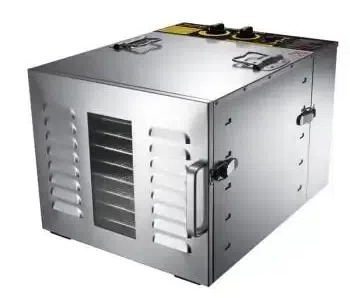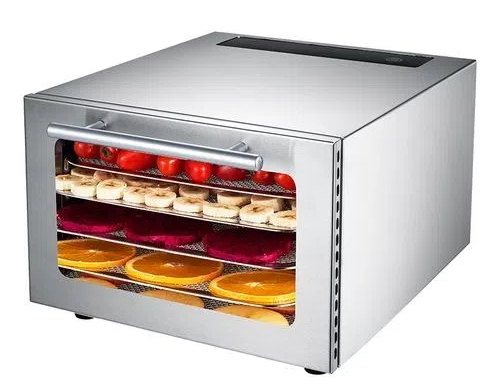
Content Menu
● Introduction
● Understanding Food Drying
● Types of Food Dryers
>> Electric Food Dryers
>> Solar Food Dryers
>> Microwave Food Dryers
● How to Choose the Right Food Dryer
>> Capacity
>> Temperature Control
>> Ease of Cleaning
● Maintenance of Food Dryers
>> Step 1: Unplug the Dryer
>> Step 2: Remove Trays and Filters
>> Step 3: Wash with Warm Soapy Water
>> Step 4: Wipe Down the Interior
>> Step 5: Dry Thoroughly
>> Step 6: Check for Damage
● Troubleshooting Common Issues
>> Uneven Drying
>> Long Drying Times
>> Odors
● Conclusion
● Frequently Asked Questions
>> 1. What foods can be dried using a food dryer?
>> 2. How long does it take to dry food in a food dryer?
>> 3. Can I dry wet foods in a food dryer?
>> 4. How do I know when my food is fully dried?
>> 5. Is it necessary to clean my food dryer after every use?
Introduction
Food drying is an ancient preservation method that has stood the test of time. It involves removing moisture from food, which inhibits the growth of bacteria, yeasts, and molds. This process not only extends the shelf life of food but also concentrates flavors and nutrients, making dried foods a popular choice for health-conscious consumers. Food dryers play a crucial role in this process, providing a controlled environment for efficient drying. In this article, we will explore the significance of food drying, the different types of food dryers available, and the importance of maintaining these appliances for optimal performance.

Understanding Food Drying
The food drying process involves the removal of moisture from food items, which can be achieved through various methods, including air drying, sun drying, and using food dryers. The benefits of dehydrating food are numerous. Dried foods retain most of their nutritional value, making them a healthy snack option. Additionally, dehydrated foods have a significantly longer shelf life compared to their fresh counterparts, making them ideal for long-term storage.
Types of Food Dryers
There are several types of food dryers available on the market, each with its unique features and benefits:
Electric Food Dryers
These are the most common type, using electric heat to dry food. They come with adjustable temperature settings and timers, allowing for precise control over the drying process.
Solar Food Dryers
Utilizing the sun's energy, these dryers are eco-friendly and cost-effective. However, they require sunny weather and may take longer to dry food compared to electric models.
Microwave Food Dryers
These are compact and quick, using microwave radiation to remove moisture. They are suitable for small batches but may not be as effective for larger quantities.

How to Choose the Right Food Dryer
When selecting a food dryer, consider the following factors:
Capacity
Choose a model that fits your drying needs. Larger families or those who plan to dry food in bulk may require a dryer with a higher capacity.
Temperature Control
Look for a dryer with adjustable temperature settings to accommodate different types of food, as some require lower temperatures for optimal drying.
Ease of Cleaning
Select a model with removable trays and easy-to-clean surfaces to simplify maintenance.
Maintenance of Food Dryers
Regular maintenance is essential for ensuring the longevity and efficiency of your food dryer. Here’s a step-by-step guide on how to clean a food dryer:
Step 1: Unplug the Dryer
Always ensure the appliance is unplugged before cleaning.
Step 2: Remove Trays and Filters
Take out all removable parts, including trays and filters.
Step 3: Wash with Warm Soapy Water
Clean the trays and filters with warm, soapy water. Avoid abrasive cleaners that could damage the surfaces.
Step 4: Wipe Down the Interior
Use a damp cloth to wipe the interior of the dryer, paying special attention to the heating element.
Step 5: Dry Thoroughly
Ensure all parts are completely dry before reassembling the dryer to prevent mold growth.
Step 6: Check for Damage
Regularly inspect the dryer for any signs of wear or damage, particularly the heating element and electrical components.
Troubleshooting Common Issues
Even with proper maintenance, food dryers can encounter issues. Here are some common problems and their solutions:
Uneven Drying
This can occur if the trays are overcrowded. Ensure that food items are arranged in a single layer and not touching each other.
Long Drying Times
If food is taking longer than usual to dry, check the temperature settings and ensure the heating element is functioning properly.
Odors
If your food dryer has developed an unpleasant smell, it may be due to leftover food particles. Thoroughly clean the dryer to eliminate any residues.
Conclusion
Food drying is a valuable technique for preserving food and enhancing its flavors. By understanding the different types of food dryers and how to maintain them, you can ensure that your drying process is efficient and effective. Regular maintenance not only prolongs the life of your appliance but also guarantees that your dried foods are safe and delicious.

Frequently Asked Questions
1. What foods can be dried using a food dryer?
A variety of fruits, vegetables, herbs, and meats can be dried using a food dryer.
2. How long does it take to dry food in a food dryer?
Drying times vary based on the type of food and the dryer model, typically ranging from 4 to 12 hours.
3. Can I dry wet foods in a food dryer?
It is recommended to pre-dry wet foods (like washing fruits) to ensure even drying.
4. How do I know when my food is fully dried?
Foods should be leathery and pliable, with no moisture when squeezed.
5. Is it necessary to clean my food dryer after every use?
Yes, regular cleaning helps maintain performance and prevents cross-contamination of flavors.












